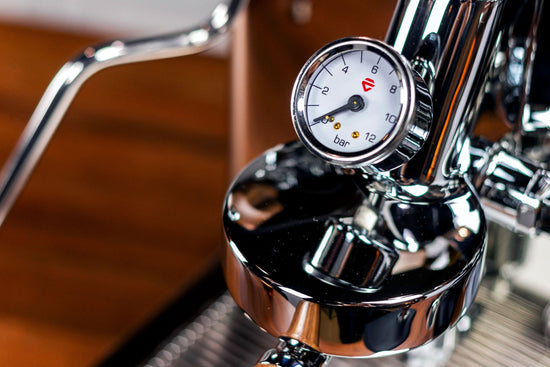Flow Profiling 101

“Flow profiling” and “pressure profiling” are increasingly used in the coffee industry. They’re more than just buzzwords, though. Similarly to how pre-infusion aids in producing more consistent extractions, flow profiling provides more control. The concept is simple: by placing an adjustable valve between the machine’s boiler and the puck of coffee, you can control the water flow rate. On the Lelit Bianca, it’s easy to see this in action. If we lift the brew lever and slowly rotate the flow control paddle, we can see the flow rate slowly increase.
This certainly seems nifty, but what’s the point? Well, it turns out that suddenly blasting a small puck of coffee with a forceful stream of water doesn’t always produce excellent results. When we do, it causes the water to look for the paths of least resistance - finding “channels” in the puck of grounds to bypass the more-compact areas. The term channeling comes from this, resulting in our grounds being unevenly extracted. The coursing river of water will over-extract those grounds in the channels. All the higher-density areas will get less water and will be under-extracted. When this mix of extractions ends up in your cup, you get a bland espresso with muddled, unclear flavors. Generally not terrible, but far from ideal.
By controlling flow, we can apply water to our puck more intentionally. A common technique used with flow profiling machines is a ramping pre-infusion at the start of the shot. This consists of starting with a restricted flow and slowly opening the valve, generally during the first 10-15 seconds of extraction. By doing so, we’ll ensure that our grounds are evenly saturated with water before slowly ramping up the pressure. This technique dramatically mitigates or eliminates channeling, allowing you to pull extracted shots with clear flavor evenly and consistently.
This simple technique alone is reason enough to love flow profiling, but a few more tricks are often used with flow profiling machines. In the same way that ramping up the flow at the beginning of extraction can be helpful, so can ramping down at the end. Throughout pulling a shot, your bed of coffee becomes less resistant. This causes causing the flow of water to increase toward the end of the shot naturally. There’s nothing inherently good or bad about this, but having flow control allows you to target a weight output regardless of grind size more carefully. By tightening the flow control valve, we can keep the flow rate of water through the puck consistent until the end of our extraction. For example, if this shot were left to its own devices, it would have given us about 60 grams in 30 seconds. Using a ramp-down toward the end of the shot, we could target 40 grams in the same 30 seconds without changing our grind. This allows us to access a unique recipe and potentially unique flavors we couldn’t have explored otherwise.
Our two favorite flow-profiling machines, the Lelit Bianca and the La Marzocco GS3, use essentially the same method to control flow rate. Both have a paddle that controls the opening of a valve between the boiler and the puck of coffee. While these are two very different machines, they both give you the same degree of control over your extractions by giving you direct control over flow rate and providing a pressure reading at the group.
Check out our latest machine with flow profiling—the Sanremo YOU! or the LUCCA Flow Control device, which can be added to any E61 espresso machine to allow flow profiling.